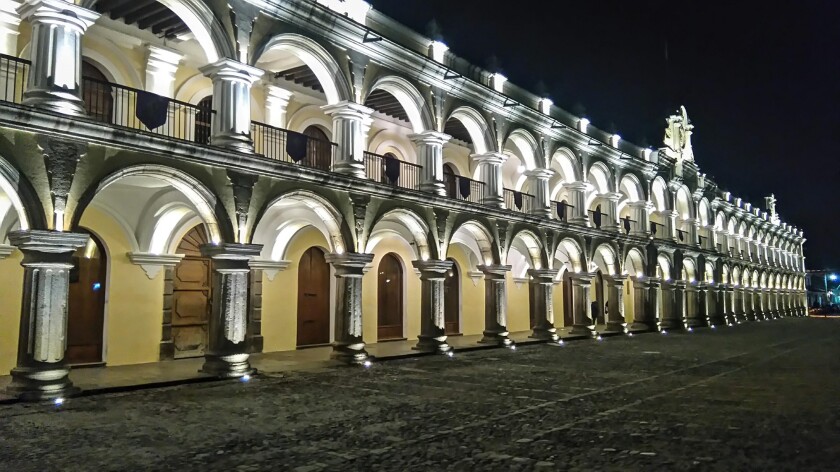Transfer Pricing (TP) regimes made their formal appearance in Latin America in the 1990s as countries’ economies became increasingly liberalised and there was a consequent increase in trade agreements and treaties to avoid double taxation.
At this point, it became urgent to establish a control system that would allow the taxation of multinational enterprises (MNEs) arriving in the region to exploit competitive advantages such as the abundance of natural resources, labour, and logistical advantages.
The country with the most experience in the region is Mexico, where the TP regime is 30 years old (or 25 years if one considers 1997 the beginning of the regime, when it was fully established with rules in addition to the mere imposition of the arm’s-length principle). The last country in the region to align itself with this regime is Brazil, which in April 2022 announced the modification of its current TP system, based on pre-established profit margins, to an OECD regime.
The status of TP in Latin America
Since the establishment of the OECD, almost all countries in Latin America have followed its recommendations and have applied, to the best of their ability, the arm’s-length standard and the rules derived from it. The Inter-American Center of Tax Administrations (CIAT) estimates that up to 87% of countries in the region have reasonably robust TP regimes and in general terms, few countries have not incorporated specific provisions (such as Barbados, Guyana, and Trinidad).
Having made this point, in Latin America, the following points are true:
The arm’s-length principle regulates transactions between related parties (even domestic ones, as in the case of Peru, Colombia or Mexico);
The application of TP methods is required and, consequently, so is the application of a comparability analysis to support the taxpayer’s choice regarding the construction of reference parameters or ranges;
Sanctions for non-compliance are established;
The filing of information returns on intercompany transactions is required (including those derived from Action 13 of the BEPS plan: the master file, local file and country by country report);
The possibility of negotiating advance TP agreements is enabled;
There are information exchange agreements; and
Disputes regarding this matter have reached the administrative courts.
It is important to note that Latin American TP regimes have been influenced by the OECD’s action plan vs base erosion and profit shifting (BEPS). Of particular interest are BEPS Actions 8-10 (the alignment of TP with value creation) and Action 13 (country-by-country reporting and TP documentation).
Little by little, either through national courts, amendments to the law or even through administrative provisions, TP regimes in Latin American countries have been regulated, adapting them to the recommendations of the BEPS plan.
For example, some relevant controversies that account for activity in the courts are:
Mexico vs. Beverage Distributor (Federal Court of Administrative Justice, 5378/16-17-09-2/1484/18-S2-08-04), regarding the deductibility of marketing and advertising expenses and their connection to trademarks;
Colombia vs. Sony Music (Administrative Contentious Chamber, 4th Section, 20641), regarding the adequate delineation of operations, the choice of entity to be analysed, the deductibility of services, and establishment of ranges; and
Argentina vs. Nike (Tax Court, File 24.495-I), regarding the deduction of royalties for the use of trademarks, technical assistance, and commissions.
Latin American TP cases post-BEPS
Country | Case name | Date | Keywords |
México | México vs Majestic Silver Corp. Federal Administrative Court | September 23 2020 | Commodity Transactions, MAP-APA. |
Argentina | Argentina vs Malteria Pampa SA, Federal Administrative Court. Case No TF 35123-A | October 6 20201 | CUP Method, commodity transactions. |
Argentina vs Molinos Río de la Plata S.A., Supreme Court, Case No CAF 1351/2014/1/RH1 | September 2 2021 | GAAR, Tax avoidance schemes, tax planning aggressive, tax treaty interpretation | |
Argentina vs Nidera S.A., Supreme Court, Case No. CAF 38801/2013/CA2-CS2 | June 24 2021 | TP methods, commodity transactions, sales & mkt hubs | |
Brazil | Brazil vs DSM Produtos Nutricionais Brasil S.A. Federal Regional Court, Case No. 5013244-89.2018.4.03.6100 | October 8 2021 | TP Methods, resale price method. |
Brazil vs Natura Cosmetivos S.A. CARF, Case No. 16327.0000738/2004-66 | August 10 2021 | Intercompany loan, interest, financial transactions | |
Chile | Chile vs Avery Dennison Chile S.A. Tax Court, Case No. 721/090 | March 31 2021 | Interquartile range and median, TP methods, LRD. |
Chile vs Walmart Chile S.A., Tax Court, Case No. 042.014K | October 1 2020 | Intercompany loan, disallowed deduction, loan agreement, no written terms. | |
Colombia | Colombia vs Petroleum Exploration International Sucursal Colombia S.A. Administrative Court | November 25 2021 | TP documentation, FCT. |
Colombia vs Carbones El Tesoro, S.A., Administrative Court | September 16 2021 | Choice of tested party, CUP, Commodity transactions, TP Methods | |
Colombia vs Interoil Colombia Explorationi and Production S.A., Administrative Court | September 9 2021 | Services and fees, desallowed deduction, withholding tax | |
Colombia vs SONY Music Entertainment Colombia S.A., The Administrative Court | July 15 2021 | TP Methods, Services and Fees | |
Costa Rica | Costa Rica vs GlaxoSmithKline Costa Rica S.A., Supreme Court | February 24 2022 | Burden of proof, TP Methods, lack of tools. |
Ecuador | N/D | N/D | N/D |
El Salvador | El Salvador vs Corp. Tax Court | August 24 2021 | Burden of proof, disallowed deduction, loans. |
El Salvador vs E-S Cosmetics Corp. Tax Court | December 15 2020 | CUP, Tax heaven, financial transactions, withholding tax, interest rate. | |
El Salvador vs E-S Sales Corp. Tax Court | December 15 2020 | TP Methods, disallowed deduction, AR range, benchmark study. | |
Panama | Panama vs Construction S.A. Administrative Tax Court | December 15 2021 | Interquartil range and mediand, services fees, TP Methods |
Panama vs Pharma Distributor S.A. Administrative Tax Court | July 9 2021 | Interquartil range and mediand, services fees, TP Methods | |
Panama vs X S.A. Administrative Tax Court | September 21 2020 | Beneficial Owner, GAAR, Tax Treaty Interpretation | |
Panama vs Petroleum Wholesale Corp. Administrative Tribunal | September 10 2020 | Interquartil range and mediand, services fees, TP Methods | |
Panama vs Glass Corp, Administrative Tribunal | February 3 2020 | TP documentation, penalty/fine | |
Panama vs AC S.A. Administrative Tribunal | January 10 2020 | Interquartile range and median, TP methods, royalty and license payments | |
Paraguay | N/D | N/D | N/D |
Peru | Peru vs Mining Corp. Tax Court | December 29 2021 | Disallowed deduction, financial transactions, interest deductibility |
Peru vs Perupetro. Tax Court | June 25 2021 | Comparability, financial transactions | |
Peru vs Telefonica. Supreme Court | February 20 2021 | back taxes, interes for late payment of taxes | |
Peru vs P Services. Tax Court | July 14 2020 | Delineationi-Substance over form. Non-recognition and recharacterisation, services and fees | |
Puerto Rico | N/D | N/D | N/D |
Uruguay | Uruguay vs Nestlé del Uruguay. Tribunal de lo Contencioso Administrativo | December 12 2019 | Royalty and License payments, self-developed intangibles, market activities |
Uruguay vs Philips Uruguay. Tribunal de lo Contencioso Administrativo | July 25 2019 | Business restructuring, Intangibles-goodwill Know-how patents, DCF, CUT/CUPs | |
Vanezuela | N/D | N/D | N/D |
Where are we heading?
In general terms, Latin American countries have made significant efforts to operate their domestic TP regimes, in some cases even proposing ad hoc alternatives to their situation, as in the case of the Argentine sixth method, or instituting simplified regimes such as the maquila regime in Mexico.
Clearly, the instrumentation of the regime is not simple and straightforward, and problems of a practical nature hinder the operation of the regime. These include:
A lack of information at the national level to apply the arm’s-length standard;
A shortage of financial resources, infrastructure and human capital;
The inexperience of administrative courts; and
The proliferation of aggressive tax planning schemes making use of intercompany operations.
Tax losses due to complex TP regimes
Of course, this has an effect on tax collection. Recent studies indicate that countries like Mexico (where there are more than 60,000 registered subsidiaries of MNEs, according to data from the Ministry of Economy) lose around 0.5% of GDP in taxation losses. Less moderate estimates calculate even up to 1.5% of GDP.
In their paper Estimating the scale of profit shifting and tax revenue losses related to foreign direct investment (2019), Petr Jansky and Miroslav Palansky estimate the figures shown below.
Country | Tax revenue loss (USD million) | Tax revenue loss as % of GDP |
Argentina | 2,316.10 | 0.42 |
Bolivia | 120.30 | 0.35 |
Brasil | 10,920.00 | 0.61 |
Chile | 1,373.70 | 0.55 |
Costa Rica | 162.90 | 0.29 |
El Salvador | 248.70 | 1.04 |
Guatemala | 144.90 | 0.21 |
Honduras | 225.80 | 1.04 |
México | 4,618.90 | 0.43 |
Paraguay | 14.00 | 0.05 |
Venezuela | 564.50 | 0.20 |
In this situation, Latin American governments have reached an impasse while awaiting the results of the negotiation of the OECD’s unified approach proposal (pillars 1 and 2). However, preliminary estimates of the effect of this proposal indicate relatively modest increases in collections. QCG Transfer Pricing Practice estimates that México could access up to a maximum of $1,884 million [annually/in total].
This will necessarily lead to rethinking how national authorities organise their TP policy and to making a greater investment in human capital, training and infrastructure. It may even be necessary to think precisely about redesigning the regime to discourage aggressive tax planning via TP. This could include requiring independence between TP advisors and tax auditors, or incorporating the recommendations derived from Action 12 of the BEPS plan regarding reportable schemes, including TP, as México did in 2020.
Likewise, greater support to key taxpayers through programmes such as the International Compliance Assurance Program (ICAP) could also make a substantial contribution to improving the regime’s results.
At this point, it is worth pondering the very important contributions to Latin America made by CIAT, which actively provides training to tax administrations in the region. This includes work on practical guides such as the ‘TP cocktail’ and the manual on international tax planning control. In addition, there are contributions from the joint collaboration platform (OECD, UN, IMF, WB) through its practical guides on comparability and documentation, and through providing audit capacity through initiatives such as tax inspectors without borders (TIWB).
Recommendations
A maxim used in TP regimes is: “the greater the functions, assets and risks, the greater the return”. Consequently, if countries expect to benefit from their respective regimes, it is imperative that they invest aggressively in the training of their TP control departments to avoid seeing their revenue diminished.
Of course, the use and improvement of information exchange mechanisms and the professionalisation of the administrative courts must be short-term objectives to achieve the efficiency of the regime, which is destined to be a bastion of collection for the countries of the continent.
I appreciate the collaboration of Daniela González, José Chamorro and Esteban Ollervides in the creation of this article.











